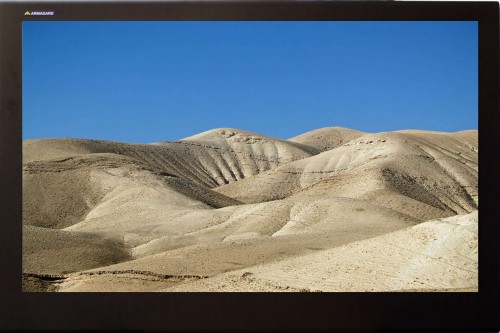Digital Signage in the Desert – extreme protection for extreme locations
Posted by: Richard Williams | Posted on: | 1 Comments
Outdoor digital signage is fast catching up with indoor systems. It has some way to go yet but there are more and more installs in outdoor locations erected everyday.
There are two reasons for this increase in use of outdoor digital signage:
- Realization of the greater potential audience size
li>Increase in protection and LCD enclosures for outdoor screens
Outdoor digital signage protection has moved a long way from the early days of outdoor screens. It is now no longer expensive, or difficult to protect a screen in an outdoor location from the elements.
Weatherproof LCD enclosures are a cost effective and practical approach at this as they not only keep outdoor LCD screens dry, they also offer impact protection and anti-vandal measures allowing their use in unsupervised locations.
However, there some outdoor hazards that even these weatherproof LCD enclosures may not be able to cope with.
One such location, where extreme protection is required, is the arid and dry areas often associated with the great plains of America and Australia. There are several hazards in a desert region that an LCD enclosure needs to be customised to defend against:
- Sand/Dust
- Heat
- Bright Sunlight
- Extreme Cold
Extreme protection from Dust/Sand
Dust can be just as damaging to an outdoor digital signage system as water. While many LCD enclosures are deigned to defend against rainfall few specialize in dust protection but if sand and dust get inside the enclosure all sorts of problems from overheating to short circuits can occur.
Extreme protection from Heat
Extreme heat is an obvious problem in desert regions. An any digital signage system installed in an area that experiences high temperatures needs to have enough cooling measures. These can include additional air circulation fans, cut of switches – triggered when temerpatures reach an inoperable high – and even air conditioning, allowing the digital signage to continue to work even in extreme heat.
Bright Sunlight
Another problem in these sorts of areas is the sunglare and screen damage caused by direct sunlight. Measure such as anti-reflective glass, screen cooling devices and other measures need to be included to protect the screen from damage and ensure the display is as visible and readable as possible.
Extreme protection from The cold
As strange as it might sound but hot dry areas often experience dramatic falls in temperature at night. Due to the lack of clouds and poor heat retention or these arid areas, a temperature that may peak at over 40 degrees c in the day may fall to below freezing at night so heaters may have to be included inside the LCD enclosure also.
Post shortlink:
Popular Products
LCD Enclosure
Need armor for your LCD/LED screen(s)? Outdoors or inside the versatile LCD enclosure protects against thieves, vandals & the weather. Installation idea: NFL stadiums.
Outdoor Digital Signage
Exclusive 46” outdoor screen protection. Dubbed the ‘Totem’, due to its distinct design, it repels damage threats, but attracts audiences. Installation idea: Drive-thru restaurants.
Portrait Flat Panel Enclosure
Safeguard your eye-level advertising display screen(s), indoors or outdoors. Completely customizable, add exciting features like touch screen technology. Installation idea: Restaurant frontages.
Indoor Digital Signage
Popular purchase for retail outlets! Great for ‘point of sale’ persuasion, boost your brand with static & motion advertising from a single unit! Installation idea: Mall of America.





